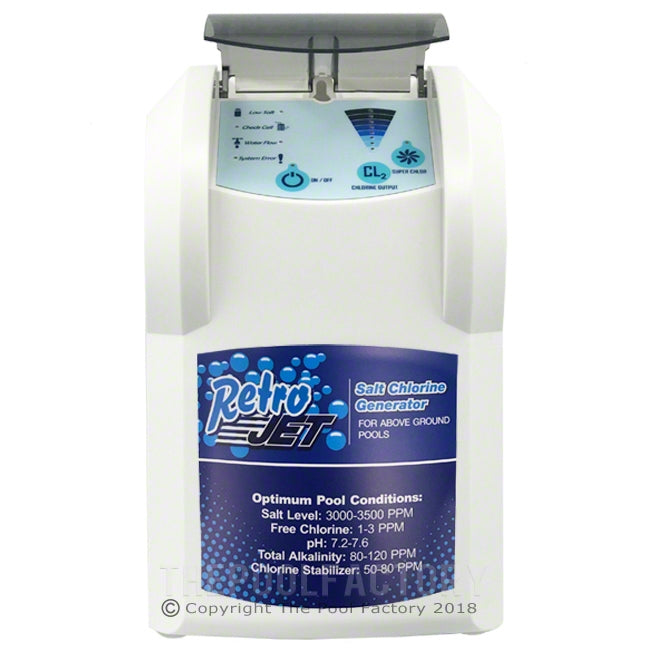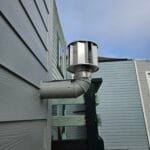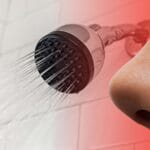Solaxx salt systems are popular for keeping pools clean. Sometimes, they face issues.
Understanding how to troubleshoot these problems can save time and money. Regular pool maintenance is crucial. A malfunctioning salt system can disrupt your pool’s balance. This guide helps you identify and fix common problems with Solaxx salt systems. By learning these troubleshooting steps, you can keep your pool in top shape.
We’ll walk you through practical tips and solutions. This way, you can enjoy a clean and healthy swimming pool without the stress of unexpected issues. Ready to dive in? Let’s get started!
Credit: support.solaxx.com
Introduction To Solaxx Salt Systems
The Solaxx Salt System is a widely used pool sanitizing system. It offers a convenient and efficient way to maintain clean and safe pool water. Many pool owners prefer it for its ease of use and reliability. Understanding how it works and common issues can help in troubleshooting and maintenance.
Importance Of Salt Systems
Salt systems are vital for pool maintenance. They convert salt into chlorine, which keeps the water clean. This process reduces the need for traditional chlorine, which can be harsh on skin and eyes. Salt systems offer a more pleasant swimming experience. They also lower maintenance costs over time.
Common Issues Faced
Despite their benefits, salt systems can face issues. One common problem is low salt levels. This can hinder the system’s ability to produce chlorine. Another issue is cell scaling. This happens when calcium builds up on the cell, reducing efficiency. Sensor errors can also occur, leading to incorrect readings. Regular maintenance can help prevent these problems.
Identifying Common Problems
Owning a Solaxx salt system helps you maintain a clean pool. However, issues can arise. Identifying common problems ensures your system runs smoothly. Let’s explore some frequent issues.
Low Salt Levels
Low salt levels can hinder your system’s performance. Check the salt cell for buildup or debris. Clean it if necessary. Use a salt meter to measure the salt level in the pool. Compare it with the recommended range in the manual.
| Steps | Description |
|---|---|
| 1 | Inspect the salt cell for buildup. |
| 2 | Clean the cell if there’s debris. |
| 3 | Use a salt meter to check salt levels. |
| 4 | Compare the reading with the manual’s recommended range. |
High Salt Levels
High salt levels can damage your pool equipment. Use a salt meter to measure the salt concentration. If the levels are high, drain some pool water. Refill with fresh water and recheck the salt level. Aim to balance it within the recommended range.
- Measure the salt level with a meter.
- Drain some water if the salt level is high.
- Refill with fresh water.
- Recheck the salt level.
- Ensure it is within the recommended range.
Troubleshooting Low Salt Levels
Maintaining the right salt levels in your Solaxx Salt System is crucial for a clean and healthy pool. Low salt levels can lead to various issues, including poor chlorine production and potential damage to your system. Understanding the causes and solutions for low salt levels can help you keep your pool in top condition.
Causes Of Low Salt Levels
Several factors can cause low salt levels in your pool. Heavy rainfall can dilute the salt concentration, leading to lower levels. Frequent backwashing can also remove salt from the pool water. Leaks in the pool or plumbing can result in water loss, which reduces salt levels. Lastly, if you add water without adding salt, this can lower the salt concentration.
Solutions For Low Salt Levels
To address low salt levels, start by testing the pool water. Use a reliable salt test kit or digital salt meter. Based on the test results, add the required amount of pool-grade salt. Follow the manufacturer’s instructions for the correct dosage. Ensure the pool pump is running while adding salt to help it dissolve and distribute evenly.
Regularly check for leaks in your pool and plumbing. Repair any leaks promptly to prevent water and salt loss. After heavy rainfall or backwashing, test the salt levels and adjust if necessary. Maintaining a routine check will help you keep the salt levels within the recommended range.

Credit: www.youtube.com
Addressing High Salt Levels
High salt levels in your Solaxx Salt System can cause several issues. It can affect the efficiency of your pool system. Also, it can lead to corrosion and damage. Addressing high salt levels promptly is crucial. Let’s explore the causes and steps to reduce salt levels.
Causes Of High Salt Levels
There are several reasons for high salt levels. First, over-adding salt is common. Pool owners might add more salt than needed. Second, water evaporation can concentrate salt. As water evaporates, salt stays behind. Third, using non-salt products can increase salt content. Some chemicals can add to salt levels.
Steps To Reduce Salt Levels
Start by testing your pool water. Use a reliable salt testing kit. Identify the current salt level. Next, dilute the salt concentration. Add fresh water to your pool. This will lower the salt content. Remove some pool water if needed. Then, refill with fresh water. Retest the water after dilution. Ensure the salt level is within the recommended range.
Monitor your pool’s salt level regularly. Check it at least once a week. Adjust as necessary. Always follow the manufacturer’s guidelines. Proper maintenance will keep your Solaxx Salt System running smoothly.
Dealing With Cell Malfunctions
Fixing issues with the Solaxx Salt System can be straightforward. Check the cell for deposits and clean it if necessary. Inspect connections to ensure everything is secure and functioning properly.
Salt systems are great for pool maintenance. But sometimes, the cells can malfunction. This can affect the system’s performance. Understanding these issues can save time and money. Let’s explore how to deal with cell malfunctions in your Solaxx salt system.Signs Of Cell Malfunctions
There are several signs that indicate cell malfunctions. A common sign is a lack of chlorine production. If your pool water is cloudy, the cell might not be working. You may also notice an error message on the control panel. Reduced water flow can also signal a problem. These signs mean the cell needs attention.Cleaning And Replacing Cells
Regular cleaning helps maintain the cell’s efficiency. Start by turning off the power. Remove the cell from the system. Use a soft brush to clean it. Avoid using hard tools that might damage the cell. Soak the cell in a mild acid solution to remove buildup. Rinse it thoroughly before reinstalling.Sometimes, cleaning is not enough. If the cell is old or damaged, replacing it is necessary. Check the manufacturer’s guidelines for the right replacement part. Install the new cell carefully. Ensure all connections are secure. Turn the power back on and check the system. The pool should start producing chlorine again.Proper care extends the life of your salt system. Regular maintenance prevents most cell malfunctions. Keeping an eye on these signs ensures a clean, healthy pool. “`Fixing Display Errors
Dealing with display errors in your Solaxx Salt System can be frustrating. These errors can prevent the system from working correctly, affecting your pool’s cleanliness. Fixing these issues ensures your pool remains safe and enjoyable.
Common Display Errors
Display errors can vary. Some common ones include error codes, blank screens, or flickering displays. Error codes often indicate specific issues within the system. Blank screens suggest power or connection problems. Flickering displays might mean wiring or internal component issues.
Resetting The System
Resetting the Solaxx Salt System often resolves display errors. To reset, first turn off the power at the circuit breaker. Wait for a few minutes. Then turn the power back on. This simple reset can clear temporary glitches and restore normal function.
If the error persists after resetting, check the user manual for specific error code solutions. Sometimes, cleaning the cell or checking connections helps. Regular maintenance can prevent many display issues.
Maintaining Optimal Performance
Keeping your Solaxx Salt System running smoothly is essential for clean and healthy pool water. Regular checks and seasonal adjustments can help you maintain optimal performance. This guide will walk you through the key steps.
Regular Maintenance Tips
Regular maintenance ensures your Solaxx Salt System operates efficiently. Follow these tips to keep your system in top shape:
- Inspect the cell: Check for any buildup or debris. Clean it if necessary.
- Monitor chlorine levels: Keep chlorine levels between 1-3 ppm.
- Check salt levels: Maintain salt levels between 2700-3400 ppm.
- Examine the control panel: Ensure all readings are within the recommended range.
Seasonal Care
Different seasons require different care routines. Adjust your maintenance efforts to match the changing needs of your Solaxx Salt System.
- Spring: Test and balance the water. Remove any winter debris from the pool.
- Summer: Increase monitoring frequency due to higher usage. Check the cell weekly.
- Fall: Reduce maintenance as pool usage drops. Prepare the system for winter.
- Winter: If not in use, winterize your system. Follow the manufacturer’s guidelines.
A well-maintained Solaxx Salt System can provide years of reliable service. Regular upkeep and seasonal care are key. By following these tips, you’ll ensure optimal performance and enjoy a clean, safe pool year-round.
When To Seek Professional Help
Solaxx salt systems are known for their efficiency and reliability. Yet, like any pool system, they may encounter issues. Some problems can be fixed easily at home. But others require professional help. Knowing when to seek expert advice is crucial. It can save time and prevent further damage.
Critical Warning Signs
Watch for unusual noises from the salt system. If you hear grinding or screeching, it may indicate a severe issue. Strange smells can also be a red flag. A burning smell might mean electrical problems. Pay attention to error codes on the display. If the system shows persistent error codes, it’s time to call a technician. Changes in water quality are another sign. If the pool water becomes cloudy or has an odd color, seek professional help.
Finding Qualified Technicians
Choose a technician with experience in Solaxx salt systems. Look for certifications and training. Certified technicians are more likely to diagnose and fix the problem correctly. Ask for recommendations from friends or family. Online reviews can also help in finding a reliable technician. Ensure the technician uses genuine Solaxx parts. Using original parts ensures compatibility and longevity. Confirm the technician offers a warranty on their work. A warranty shows confidence in their service.

Credit: www.thepoolfactory.com
Frequently Asked Questions
What Should I Do If My Solaxx Salt System Is Not Generating Chlorine?
Check the salt level. Ensure the cell is clean. Inspect for any error codes.
How Often Should I Clean The Solaxx Salt Cell?
Clean the salt cell every 3-6 months. This helps maintain efficiency and prolongs its life.
Why Is My Solaxx Salt System Showing A Low Salt Warning?
Low salt warnings indicate the salt level is below the required range. Add more salt to the pool.
How Do I Reset My Solaxx Salt System?
Turn off the power. Wait a few minutes. Turn it back on. Check if the problem is resolved.
Can I Use Regular Table Salt In My Solaxx System?
No, use only pool-grade salt. Regular table salt may contain additives that can harm the system.
Conclusion
Maintaining your Solaxx salt system ensures a smooth pool experience. Troubleshooting common issues helps extend the system’s life. Regular checks prevent major problems. Follow the steps mentioned for effective solutions. Enjoy a clean and safe swimming environment. Your pool will thank you.
Stay proactive with maintenance. Happy swimming!




